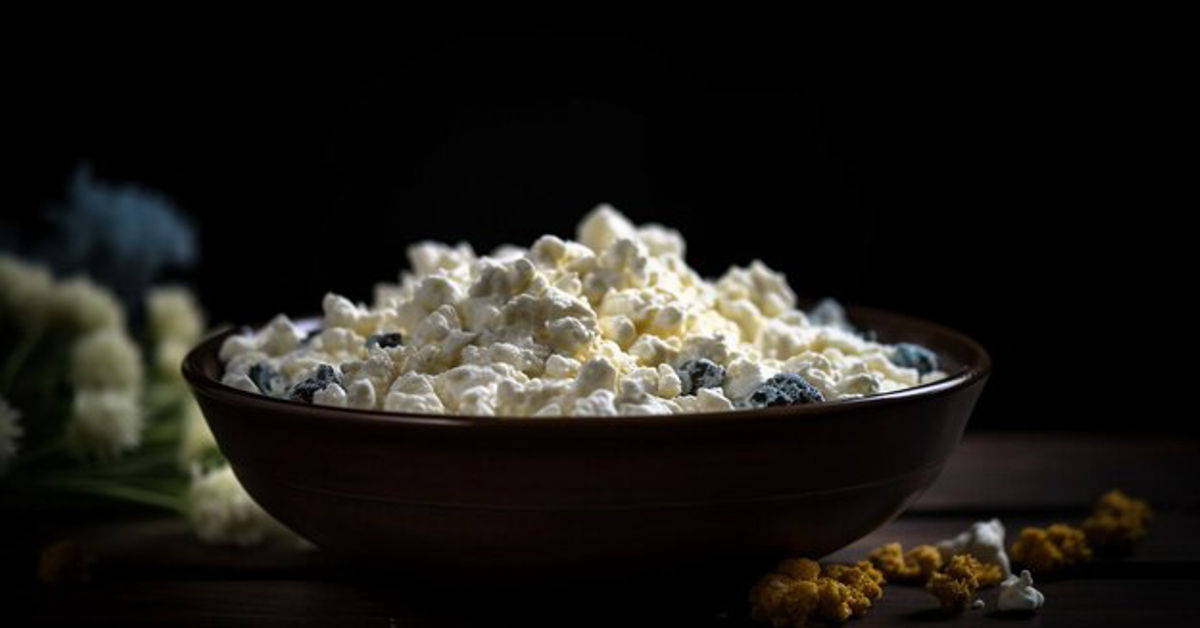Cottage cheese is more than just another dairy product sitting on the supermarket shelf. It is a powerhouse of nutrients a versatile ingredient in the kitchen, and a trusted food in both traditional and modern diets. What makes it special is its mild taste and creamy yet chunky texture that can appeal to a wide range of palates. Unlike aged cheeses, it is fresh, light, and ready to eat within hours of production.
In recent years, cottage cheese has gained significant attention in health and wellness communities. Fitness enthusiasts love it for its high protein content, while families appreciate it as a healthy snack for children and adults alike. Its adaptability allows it to feature in sweet breakfasts, savory main courses, or even as a quick snack straight from the tub. This introduction sets the stage for exploring how cottage cheese fits seamlessly into nutrition, lifestyle, and culture.
History and Origin of Cottage Cheese
The story of cottage cheese stretches back centuries, rooted in traditional farming practices. In early European households, leftover milk was often curdled to create this fresh cheese, making it both economical and nutritious. Its very name reflects its rustic beginnings, as it was commonly made in small cottages where farmers turned surplus milk into something valuable.
Over time, cottage cheese spread across continents, carried by migration and trade. In the United States, it surged in popularity during the 20th century as a staple of healthy eating. Its low-fat reputation earned it a place in countless diets, from athletes to homemakers seeking lighter meal options. The enduring appeal of cottage cheese comes not just from its nutrition but from the rich cultural tradition that connects today’s consumers with centuries-old food practices.
How Cottage Cheese Is Made
The process of creating cottage cheese is both scientific and artisanal. It begins with pasteurized skimmed or low-fat milk, which is curdled using either bacterial cultures or acidic substances like lemon juice. Once curds form, they are cut into small pieces and gently heated. This heating step strengthens the curds and creates the unique lumpy texture associated with cottage cheese.
After heating, the curds are thoroughly rinsed in cold water to remove excess acidity and whey. This rinsing also gives cottage cheese its refreshing flavor and lighter consistency. At this point, cream or milk may be added back in, depending on the desired fat level. Unlike aged cheeses that require time to develop flavor, cottage cheese is ready for consumption almost immediately. This simplicity is part of what makes it a beloved food worldwide.
Nutritional Profile of Cottage Cheese
Cottage cheese shines as a nutrient-dense food that packs a lot of value into a small serving. It is high in protein, moderate in fat, and relatively low in calories, making it a balanced option for both athletes and everyday eaters. In addition to macronutrients, it contains a variety of essential vitamins and minerals.
Nutritional Breakdown of 1 Cup (210 g) Cottage Cheese
| Nutrient | Amount | Why It Matters |
| Calories | 210 | Provides sustainable energy without excess |
| Protein | 27 g | Supports muscle repair, growth, and satiety |
| Fat | 6 g | Provides healthy fats for energy and cell function |
| Carbohydrates | 6 g | Offers quick fuel without blood sugar spikes |
| Calcium | 14% DV | Essential for bones, teeth, and nerve function |
| Vitamin B12 | 60% DV | Crucial for energy and nervous system health |
| Selenium | 30% DV | Acts as an antioxidant to protect against damage |
These nutrients combine to make cottage cheese a well-rounded food. It is especially beneficial for those with higher protein needs, such as athletes, children, and older adults who require more support for muscle and bone health.
Types of Cottage Cheese Available
Cottage cheese is not a one-size-fits-all food. It comes in several varieties, each offering a different taste, texture, and nutritional balance. Full-fat versions provide creaminess and richness, while low-fat and fat-free options cater to calorie-conscious consumers.
Curd size also creates variety: small curd cottage cheese is firm and slightly chewy, while large curd varieties are softer and creamier. Beyond these, modern options include whipped cottage cheese for smoother texture and flavored versions blended with fruit, herbs, or savory spices. With such diversity, cottage cheese can meet nearly any dietary need or culinary preference.
Health Benefits of Cottage Cheese
Cottage cheese offers numerous health benefits, thanks to its nutrient profile. Its protein helps regulate hunger hormones, making it an effective food for managing appetite. Calcium and phosphorus strengthen bones, while B vitamins assist with energy metabolism. Selenium adds another layer of benefit by helping defend the body against oxidative stress.
Another significant advantage is its adaptability for various diets. It fits seamlessly into low-carb, ketogenic, and high-protein plans. For vegetarians, it provides a reliable source of essential amino acids that support overall wellness. Consumed regularly, cottage cheese can contribute to improved digestion, muscle preservation, and weight management without sacrificing taste or enjoyment.
Cottage Cheese and Weight Management
Weight management often requires foods that are both satisfying and nutritious. Cottage cheese excels in this area because its high protein content keeps hunger at bay for longer periods. Eating it as a snack or light meal reduces the likelihood of overeating later.
Another reason cottage cheese works well for weight control is its relatively low calorie count compared to its nutritional value. Its slow-digesting proteins keep blood sugar stable, preventing energy crashes that often lead to unhealthy snacking. Whether used in a salad, smoothie, or on its own, cottage cheese can be a cornerstone of a successful, sustainable weight management plan.
Cottage Cheese for Muscle Growth and Fitness
Athletes and gym-goers often turn to cottage cheese for its slow-digesting casein protein. This provides a steady release of amino acids, making it an ideal food for muscle recovery, especially when consumed before bed. The body benefits from a continuous stream of protein during rest, which supports muscle repair and growth overnight.
Cottage cheese also contains important minerals like calcium and phosphorus, which play roles in muscle contraction and bone density. Unlike higher-fat dairy products, it provides these benefits without unnecessary calories. This makes it an efficient choice for people who want to maintain lean muscle mass while staying fit and active.
How to Add Cottage Cheese to Your Diet
Adding cottage cheese to your diet is simple and creative. Its neutral flavor allows it to be paired with sweet or savory dishes, depending on your preferences. Mixing it with fresh fruit such as pineapple or berries makes a refreshing snack, while combining it with vegetables creates a protein-rich salad topping.
It can also be used as a substitute for heavier dairy products in recipes. For example, it can replace cream cheese in desserts, sour cream in dips, or ricotta in pasta dishes. Blending it into smoothies adds thickness and protein, while spreading it on toast with herbs provides a quick, balanced meal.
Comparing Cottage Cheese with Other Dairy Products
When compared to other dairy options, cottage cheese stands out as a lean and protein-rich choice. Unlike cream cheese and sour cream, it is low in fat and calories. Compared to yogurt, it often provides more protein per serving, although yogurt can offer probiotics that support gut health.
Cottage Cheese Compared with Popular Dairy Products
| Product | Protein (per cup) | Fat (per cup) | Calories | Ideal Use Case |
| Cottage Cheese | 27 g | 6 g | 210 | Snacking, cooking, baking |
| Greek Yogurt | 20 g | 9 g | 220 | Smoothies, breakfasts |
| Cream Cheese | 6 g | 35 g | 350 | Spreads, desserts |
| Sour Cream | 5 g | 20 g | 250 | Sauces, dips |
| Ricotta Cheese | 14 g | 16 g | 300 | Pasta fillings, baking |
This table illustrates how cottage chees’e offers a unique balance of versatility and nutrition. It is especially appealing to those looking for a high-protein, low-fat alternative without compromising taste.
Possible Side Effects and Considerations
While cottage chees’e is beneficial for many, some individuals need to approach it with caution. One concern is sodium content, which can be high in certain brands. For people with high blood pressure or heart concerns, low-sodium versions are a better choice.
Additionally, those who are lactose intolerant may find it difficult to digest cottage chees’e. Fortunately, lactose-free options are widely available. People with dairy allergies should avoid it altogether. As with any food, balance and moderation are key—cottage chees’e works best as part of a varied and balanced diet.
Creative Recipes with Cottage Cheese
Cottage chees’e adds a delicious twist to both traditional and innovative recipes. For breakfast, layering it with granola and berries creates a parfait that balances protein, fiber, and sweetness. At lunch, mixing it with avocado and herbs makes a creamy spread for sandwiches.
For more elaborate meals, it can replace ricotta in lasagna or add lightness to cheesecakes and muffins. Athletes may enjoy blending it into post-workout smoothies with bananas and peanut butter. Its versatility in both savory and sweet dishes makes it a valuable ingredient for creative cooks.
Recipe Ideas Using Cottage Cheese
| Recipe Idea | Description | Best Time to Eat |
| Fruit and Nut Parfait | Layer with berries, granola, and almonds | Breakfast |
| Herb Cottage Spread | Mix with avocado and herbs for toast topping | Snack/Lunch |
| Protein Smoothie | Blend with banana, spinach, and milk | Post-Workout |
| Light Cheesecake | Substitute for cream cheese | Dessert |
| Cottage Cheese Lasagna | Replace ricotta in pasta layers | Dinner |
Conclusion and Final Thoughts
Cottage cheese is far more than a humble curdled milk product. It is a nutritious, versatile, and accessible food that continues to play an important role in modern diets. Its high protein and low-calorie profile make it ideal for weight management, fitness goals, and overall health.
Beyond nutrition, its history and global popularity highlight its cultural significance. Whether eaten plain, mixed into recipes, or used creatively in new dishes, cottage chees’e offers benefits that suit nearly every lifestyle. Adding it to your diet can enrich your meals and support your well-being in countless ways.
Frequently Asked Questions (FAQs)
1. Is cottage chees’e good for weight loss?
Yes, cottage chees’e is excellent for weight loss. Its high protein content promotes satiety, helping reduce overall calorie intake. Additionally, it is relatively low in calories, making it a filling yet light option for dieters.
2. Can lactose-intolerant individuals eat cottage chees’e?
Some lactose-intolerant individuals may tolerate small amounts of cottage chees’e, especially lower-lactose versions. However, those with severe intolerance should opt for lactose-free cottage chees’e products available in most stores.
3. What is the best time to eat cottage chees’e?
Cottage chees’e can be enjoyed at any time of the day, but many athletes prefer it at night due to its slow-digesting casein protein. This supports muscle recovery during sleep. It also works well as a breakfast, snack, or light dinner.
4. How does cottage chees’e compare to yogurt?
Cottage chees’e generally provides more prtein per serving than yogurt, but yogurt often contains probiotics that support gut health. Choosing between them depends on whether your priority is protein intake or digestive health.
5. Can children eat cottage chees’e regularly?
Yes, cottage chees’e is safe and beneficial for children. It provides protein, calcium, and vitamins essential for growth. Serving it with fruits or incorporating it into family meals makes it both nutritious and enjoyable for kids.







